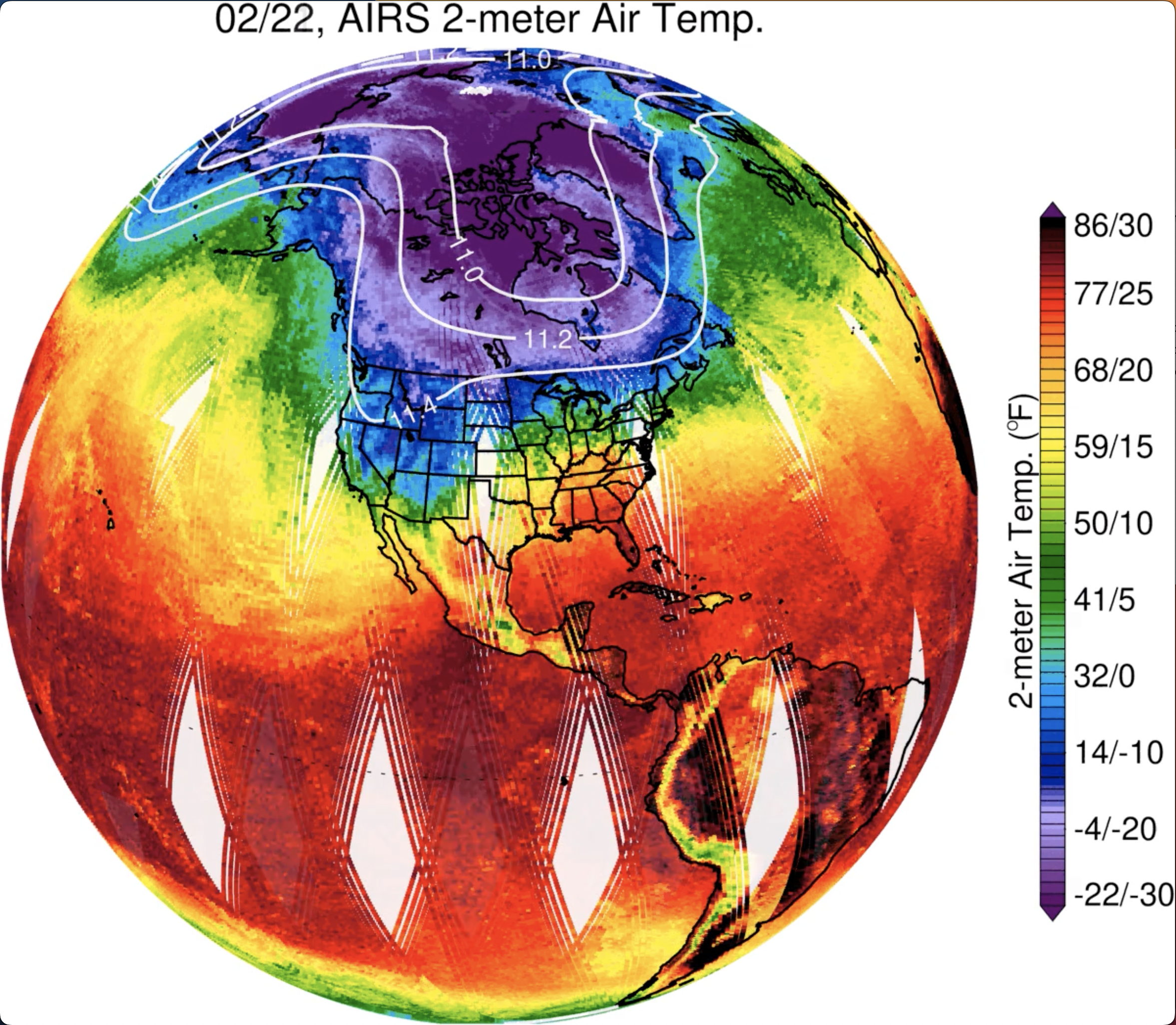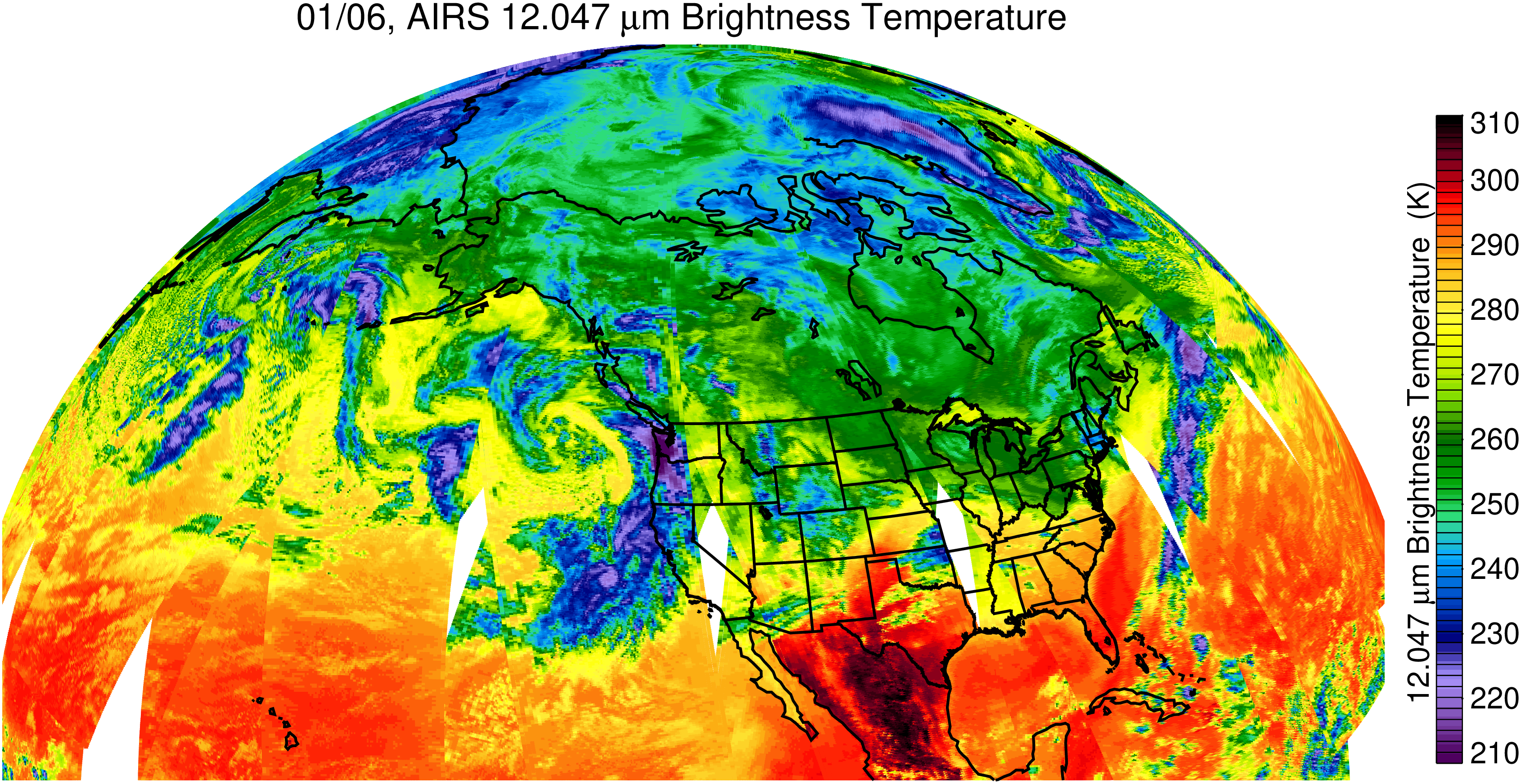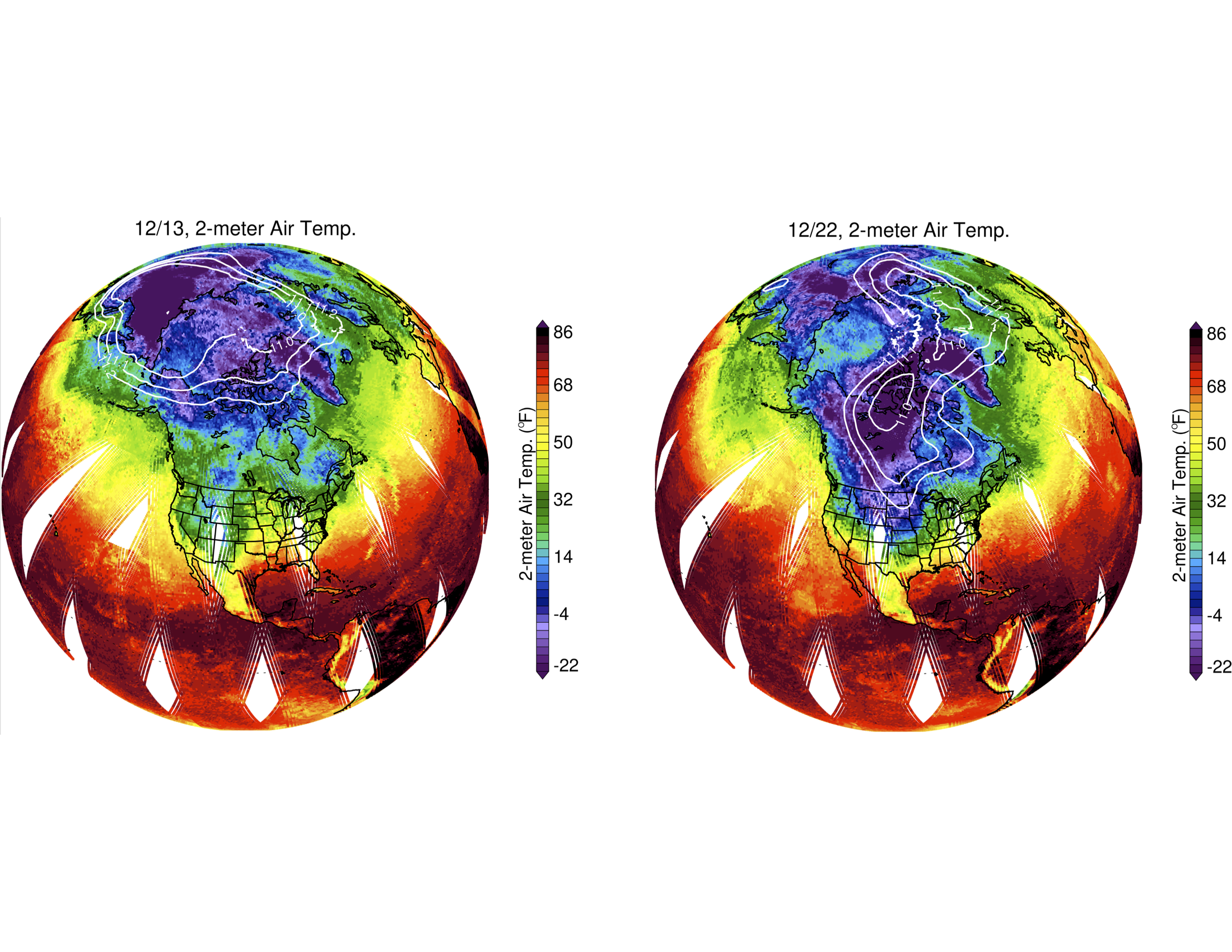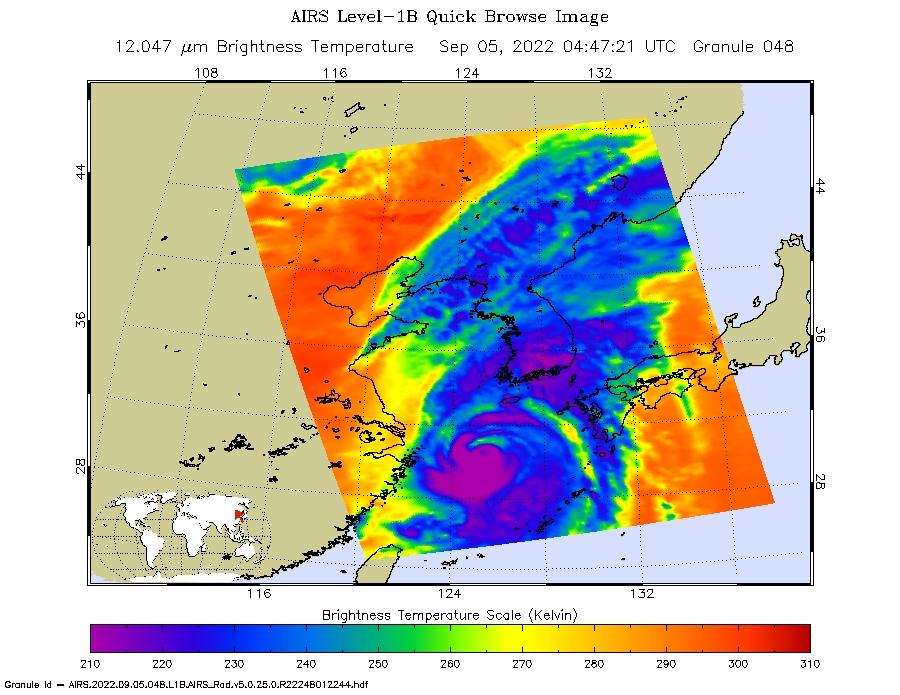News | June 10, 2006
Severe Weather and Climate Change - Is There A Link?

The scientific method usually takes the form of posing a hypothesis based on some observed phenomena, using it to make predictions and then testing those predictions against observations. One such hypothesis is that climate change, such as global warming, will lead to wider swings in weather patterns and to more occurrences of more severe weather events.
To test this hypothesis it is crucial to have a system in place that can measure these weather events fully and very accurately, and measure subtle changes in climate as well. And that is where AIRS comes in - AIRS is a research instrument designed to address this issue. But, can we be certain that our observations are good enough?
One test is to determine if AIRS data can lead to better storm forecasts. And indeed, the AIRS science team has already demonstrated that AIRS data can lead to better forecasts of the location and intensity of "extratropical cyclones" which are mid-latitude storms (an example of which is the "Northeaster" that often strikes the east coast of the United States). This is a good indication that AIRS data are much better than what is available to the weather service, and probably good enough to test the climate-weather connection hypothesis. Of course we need a much longer time series of data than we have so far, but we are well on the way.
Another hypothesis is climate change may cause the water (hydrologic) cycle to accelerate. Remember that water cycles through many forms. It falls as rain or snow, soaks into the soil, runs into lakes and oceans, and evaporates again into atmospheric water vapor, where it can condense into cloud droplets and eventually fall as rain and snow. If Earth's water flows through this cycle at a faster pace, this would mean that there would be more water vapor and clouds in the atmosphere and more rain falling out of it. The ability of AIRS to measure the humidity distribution in the atmosphere will make it possible to determine with sufficient accuracy if the water cycle is indeed accelerating.
We are all familiar with the annual summer-fall-winter-spring cycle, but there are other cycles and changes, and the topic of "interannual variability" a term that refers to natural cycles and changes that last longer than a year - is of intense interest among scientists as well as the general public.
The El Niño phenomenon is such a cycle it seems to occur every 3-5 years on the average. But there are also thought to be longer cycles an example is the so-called decadal oscillation, which may be responsible for the prolonged drought that has plagued the western United States for several years and may have been responsible for the infamous "dust bowl" drought in the 1930's. Some of these cycles must still be classified as hypothetical and can only be confirmed and otherwise studied when a sufficient amount of high quality observations are available.






